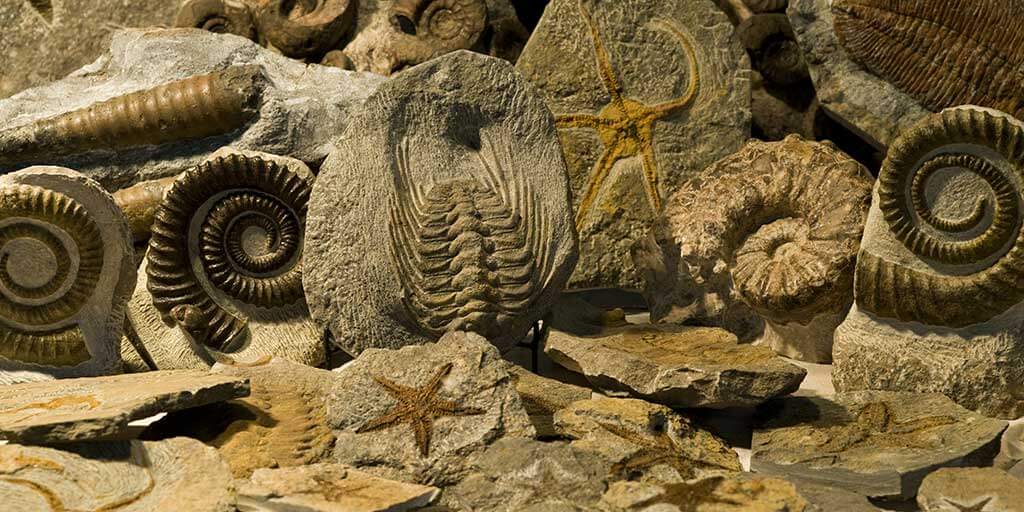Why Did the Cambrian Explosion Trouble Darwin?

Dr. Stephen Meyer is a former geophysicist who received his PhD in the Philosophy of Science from Cambridge University. He has written several bestselling books including, Signature in the Cell and Darwin’s Doubt. In Darwin’s Doubt, Dr. Meyer tells how Charles Darwin himself doubted the ability of his own theory to explain a crucial piece of evidence, and how that doubt has grown up to create a major crisis in evolutionary thinking today. Darwin was troubled by a major event in the history of life known as the Cambrian explosion in which the first major groups of animals appeared abruptly in the fossil record.
Dr. John Ankerberg: Dr. Meyer, I want to begin with a clip from Illustra Media’s beautiful documentary movie, Darwin’s Dilemma, which asks, how could the complex animals in the Cambrian explosion suddenly come into existence?
Transcription of clip:
Narrator: An ancient mystery is etched upon these mountains, a story of primordial oceans and prehistoric life; of creatures stranger than fiction and the controversy that has surrounded them for more than a century. Buried among these majestic peaks are glimpses of an event that transformed the planet in a moment of geological time, compelling evidence etched in stone that challenges long-held assumptions about the origins of animal life on earth.
Today most paleontologists think that complex animals first appeared on earth about 530 million years ago during a geological period known as the Cambrian. But early in the 19th century little was understood about this seminal event in the history of life.
In 1831 the renowned geologist Adam Sedgwick began to excavate the Cambrian rock strata in northern Wales. He was assisted by Charles Darwin, a recent graduate of Cambridge University. For the young Darwin, the fossils embedded in the Cambrian shale were an intriguing curiosity. But at 22 he lacked the perspective to appreciate their full significance. Natural selection, the theory of evolution and The Origin of Species all lay years ahead, so he couldn’t imagine that the stones beneath him held a mystery he would never resolve. It was a mystery Darwin would ponder into old age and then pass on to future generations, the mystery of the Cambrian explosion.
Dr. John Ankerberg: Now, Dr. Meyer, you have written a bestselling book called Darwin’s Doubt. What was the doubt that Charles Darwin had, and what is the Cambrian explosion? Why is it so important?
Dr. Stephen Meyer: Well, Darwin had a doubt about an event in the history of life known as the Cambrian explosion. And the Cambrian explosion is the geologically sudden or abrupt appearance of most of the major groups of animals that have ever existed on earth. And this is a dramatic event in the history of life because it documents the appearance of the first major complex animal forms and the fact that these animal forms appear so suddenly in the fossil record, which was something that was really contrary to Darwin’s thinking about the history of life, which was something that he was acutely aware of and which bothered him, as the film said, right into the end of his life.
Ankerberg: I want to go to this next clip, and we’re going to show how the fossils in the Cambrian explosion came to be found. I mean, this is fascinating for folks.
Transcription of clip:
Narrator: More than a century ago, a stunning window to the Cambrian explosion was opened by a series of discoveries made in western Canada. In 1886 the Canadian Pacific Railroad reached British Columbia and the Kicking Horse Valley. For the first time eastern and western Canada were linked by a 2500-mile steel artery that opened the Rocky Mountains to tourists, adventurers and men of science. Among them was the geologist R.G. McConnell. Earlier in the year, McConnell had heard reports of a shale bed on the flank of Mount Stephen, just outside the town of Field. Railroad carpenters who had explored the area said it was filled with “stone bugs”. In September McConnell climbed the mountain. To his amazement he found unmistakable imprints of prehistoric life on most of the shales in the bed. McConnell was standing in an ocean of fossilized trilobites.
Simon Conway Morris: Trilobites are icons of the Cambrian, and there are billions of trilobites high up on the shoulder of Mount Stephen. And one reason for that is that as they grew they periodically threw off their old skeleton and made a new skeleton. So basically they made many fossils through their individual lives.
Narrator: McConnell collected hundreds of these fossils and sent many of them to other scientists for examination. News of his work soon reached the offices of the United States Geological Survey and Charles Doolittle Walcott, a leading expert on Cambrian paleontology.
On August 30, 1909, Walcott led his team below this ridge 15 miles north of Mount Stephen. There, legend holds, he stopped to examine a pile of shale that blocked the narrow horse trail. As he picked up a slab, the geologist noticed a faint but well-defined fossil he had never seen before, a delicate lace crab he later named Marrella.
Simon Conway Morris: He knew plenty and plenty about the Cambrian. He was an expert on the Cambrian. He published many papers. And when you see this little Marrella, it’s only about a centimeter in length. You get out your hand lens and you suddenly see that this is, you know, it shouldn’t be there. This is soft-bodied effectively. And I’m sure he realized in seconds what it meant. He must have.
Ankerberg: Alright, Dr. Meyer, why were these Burgess fossils so important?
Meyer: Well, the fossils of the Burgess Shale documented that the Cambrian explosion was even more explosive than Darwin had realized. Now, Darwin was really troubled by the Cambrian explosion just from the fossils that he knew—trilobites and a range of other forms. But he anticipated that future fossil finds would fill in the missing ancestors in the lower Precambrian rocks so that the history of life would look like a great branching tree, as I have on the slide here. But, unfortunately, what was discovered from the standpoint of a Darwinian theory, was that you had this sudden appearance of all the first complex forms of animal life, but the ancestral forms, the slightly simpler forms in the lower pre-Cambrian strata were not present. And the Burgess Shale, rather than documenting those ancestral forms, actually documented a range of new complex animals that even Darwin didn’t know about. And so, in effect, the discoveries of the Burgess Shale show that the Cambrian explosion had been even more explosive than Darwin anticipated. And so the mystery of those missing fossils was even more acute.
Editor’s note. This has been excerpted and lightly edited from our television series, “The Mystery of the Missing Fossils.”








